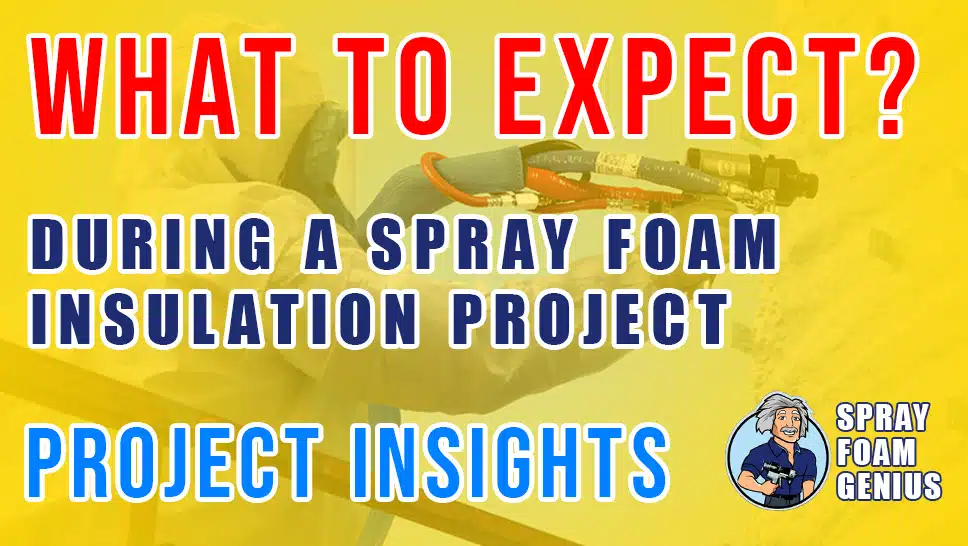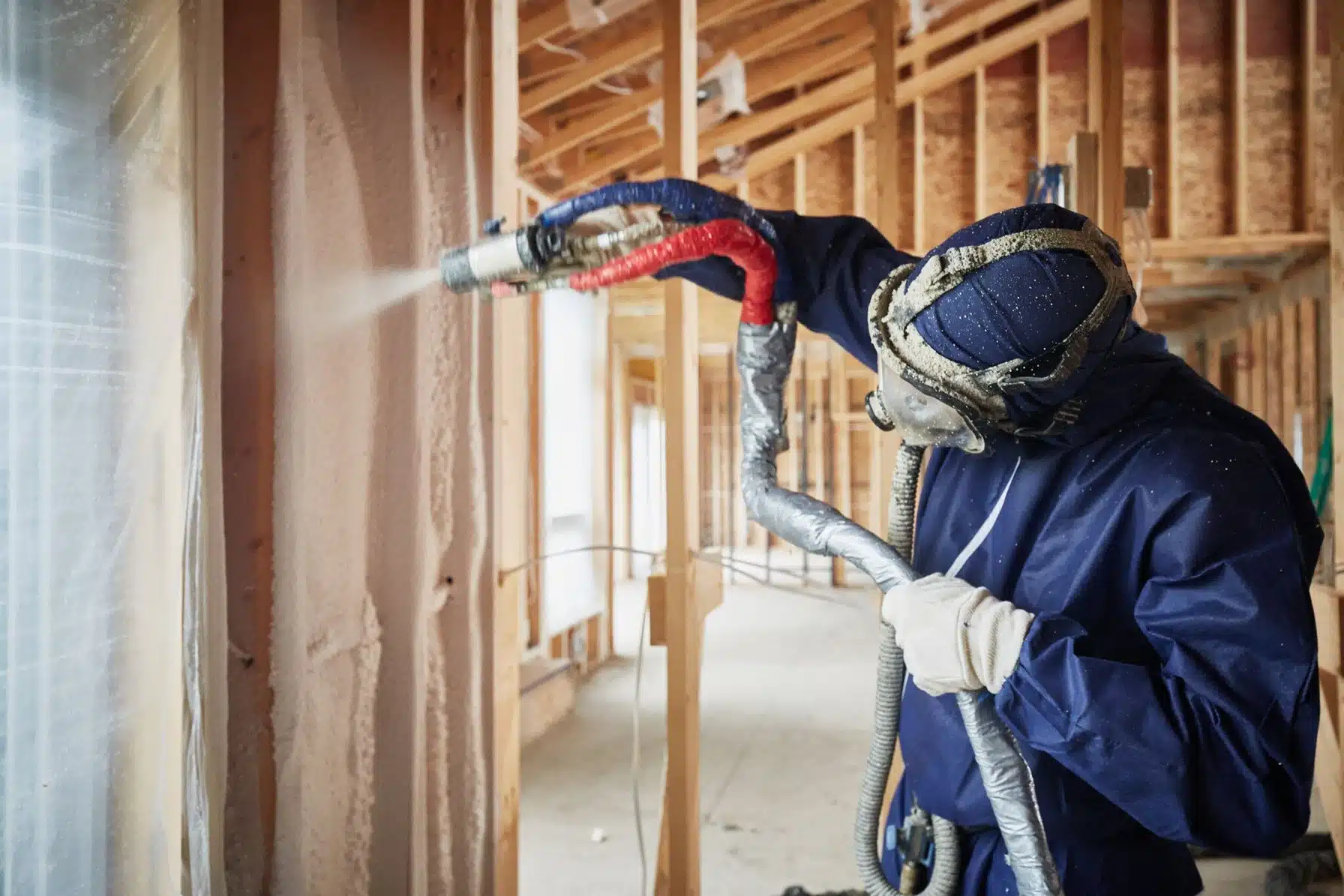
Spray foam insulation is a popular choice for homeowners and property managers seeking an effective solution for energy efficiency and comfort. At Spray Foam Genius Marketing, we specialize in supporting spray foam insulation contractors with expert SEO and digital marketing services. This guide is designed to help you understand what to expect during a spray foam insulation project, from initial consultation to post-installation care.
Introduction to Spray Foam Insulation
Spray foam insulation is a modern technique used to insulate and seal gaps in buildings. It is applied as a liquid that expands and hardens, creating a solid layer of insulation. There are two main types of spray foam: open-cell and closed-cell.
Open-Cell vs. Closed-Cell Foam
- Open-Cell Foam: This type of foam is less dense and has a softer texture. It expands more during application, making it ideal for filling gaps and voids. Open-cell foam is excellent for soundproofing and is often used in interior spaces.
- Closed-Cell Foam: Closed-cell foam is denser and more rigid. It offers higher insulation values and acts as a moisture barrier, making it suitable for areas exposed to high humidity or moisture. This type of foam is often used in exterior applications and areas prone to water exposure.
Initial Consultation and Assessment
The spray foam insulation project begins with a comprehensive consultation and assessment by a professional contractor. This phase is crucial for setting expectations and planning the project effectively.
Property Evaluation
During the initial consultation, the contractor will perform a thorough evaluation of your property. This involves:
- Identifying Areas to Insulate: The contractor will inspect areas such as attics, walls, crawl spaces, and basements to determine where insulation is needed.
- Assessing Existing Insulation: If there is existing insulation, the contractor will evaluate its condition and determine if it needs to be removed or if it can be improved with spray foam.
- Understanding Your Needs: The contractor will discuss your specific needs, such as energy efficiency goals, soundproofing requirements, and budget constraints.
Selecting the Right Type of Foam
Based on the property evaluation, the contractor will recommend the most suitable type of spray foam insulation. Factors influencing this decision include:
- Climate and Moisture Levels: Closed-cell foam is preferred in areas with high moisture levels, while open-cell foam is often used in dry conditions.
- Insulation Goals: Your desired level of insulation and soundproofing will help determine the type of foam that best meets your needs.
- Budget: The cost of materials and installation can vary based on the type of foam and the size of the area to be insulated.
Cost Estimate and Project Timeline
The contractor will provide a detailed cost estimate and project timeline. This estimate will include:
- Material Costs: The price of spray foam insulation materials.
- Labor Costs: The cost of professional installation services.
- Additional Services: Any additional services such as removal of existing insulation or preparation work.
- Project Duration: An estimated timeline for completing the project, including preparation, installation, and clean-up.
Preparation Before Installation
Proper preparation is essential for a successful spray foam insulation project. This phase ensures that the installation process is smooth and that the final result meets your expectations.
Area Preparation
Before installation begins, the contractor will prepare the areas to be insulated. This may involve:
- Clearing the Space: Removing furniture, decorations, and other items from the area to avoid damage and ensure easy access.
- Protecting Surfaces: Covering floors and other surfaces with protective materials to prevent overspray from affecting them.
- Accessing the Area: Ensuring that all areas to be insulated are easily accessible for the installation team.
Sealing Off Spaces
To prevent spray foam from affecting areas outside the scope of the project, the contractor will seal off:
- Openings and Vents: Covering any openings, vents, or ducts to contain the spray foam within the intended areas.
- Adjacent Rooms: Using barriers or plastic sheeting to protect adjacent rooms from overspray.
Ventilation
Proper ventilation is crucial during the installation of spray foam insulation. The contractor will ensure:
- Air Circulation: Adequate ventilation to disperse any fumes and maintain good air quality.
- Safety Precautions: Following safety guidelines to protect both the installation team and occupants of the building.
The Spray Foam Installation Process
With preparations complete, the spray foam insulation installation can begin. This phase involves several key steps:
Application
The contractor will use specialized equipment to apply the spray foam insulation. This process typically includes:
- Mixing the Foam: Combining the components of the spray foam to create the liquid mixture.
- Spraying the Foam: Use a spray gun to apply the foam onto surfaces. The foam expands and adheres to the surfaces as it is applied.
- Ensuring Proper Coverage: Apply the foam evenly to achieve the desired thickness and coverage.
Coverage and Thickness
Proper coverage and thickness are essential for effective insulation. The contractor will:
- Monitor the Application: Ensure that the foam is applied to the required thickness and that all areas are covered.
- Apply Multiple Layers: If necessary, apply additional layers to achieve the optimal insulation value.
Curing Time
After application, the foam needs time to cure. This curing period typically includes:
- Initial Set Time: The foam begins to harden shortly after application.
- Full Cure Time: The foam fully cures over 24-48 hours. During this time, the area should be kept well-ventilated and free of disturbances.
Post-Installation Process
Once the foam has cured, several final steps complete the project:
Inspection
A thorough inspection is conducted to ensure that the insulation has been applied correctly. This involves:
- Checking Coverage: Verifying that all areas have been adequately covered and that there are no missed spots.
- Assessing Quality: Ensuring that the foam has adhered properly and that there are no issues with the installation.
Cleaning and Restoration
The contractor will clean up the work area, including:
- Removing Protective Materials: Take down any coverings or barriers used during the installation process.
- Cleaning Debris: Removing any leftover materials or debris from the installation.
Final Touches
If necessary, the contractor will make final adjustments or touch-ups to ensure that the insulation performs optimally. This may include:
- Addressing Any Issues: Fixing any minor problems identified during the inspection.
- Final Adjustments: Make any necessary adjustments to ensure that the insulation meets your expectations.
Maintenance and Care
Proper maintenance and care can help ensure that your spray foam insulation continues to perform effectively:
Regular Inspections
Conduct periodic inspections to identify any potential issues. Look for signs of:
- Damage: Cracks, gaps, or deterioration in the insulation.
- Moisture: Any signs of moisture infiltration or mold growth.
Ventilation
Maintain proper ventilation to prevent issues such as trapped moisture, which can affect the performance of the insulation. Ensure that:
- Ventilation Systems: HVAC systems and ventilation fans are functioning correctly.
- Air Flow: Adequate airflow is maintained throughout the building.
Professional Check-Ups
Schedule professional check-ups if needed. A qualified contractor can:
- Perform Inspections: Conduct thorough inspections to assess the condition of the insulation.
- Address Any Problems: Provide repairs or maintenance as necessary to keep the insulation in optimal condition.
Benefits of Spray Foam Insulation

Spray foam insulation offers numerous benefits, making it a popular choice for many property owners:
Energy Efficiency
Spray foam insulation provides excellent thermal resistance, which helps:
- Reduce Energy Costs: By preventing air leaks, spray foam can lower heating and cooling costs.
- Improve Comfort: Maintaining a consistent indoor temperature throughout the year.
Moisture Barrier
Closed-cell spray foam acts as a moisture barrier, which helps:
- Prevent Mold Growth: By reducing the risk of moisture infiltration and mold development.
- Protect Building Materials: From water damage and deterioration.
Sound Proofing
Spray foam insulation offers soundproofing benefits, including:
- Reducing Noise Transmission: By minimizing sound transfer between rooms and from outside sources.
- Enhancing Privacy: Making your home or building quieter and more comfortable.
Durability
Spray foam insulation is long-lasting and resistant to:
- Settling or Shifting: Maintaining its effectiveness over time without the need for replacement.
- Environmental Factors: Such as moisture, pests, and temperature fluctuations.
Enhance Your Business Today
Understanding what to expect during a spray foam insulation project can help ensure a smooth and successful experience. From the initial consultation and assessment to the final touches, each step is crucial for achieving the best results for your property. At Spray Foam Genius Marketing, we are dedicated to supporting spray foam insulation contractors with expert SEO and digital marketing services to enhance their online presence and connect with clients like you. If you’re considering a spray foam insulation project or have any questions, don’t hesitate to reach out. Contact us at 877-840-FOAM for USA and 844-741-FOAM for Canada, visit our website at Spray Foam Genius Marketing, or email us at [email protected].
We’re here to assist you in finding the right professionals for your insulation needs and ensuring a successful project.
- How to Use Pinterest to Market Your Spray Foam Insulation Services - December 27, 2023
- How to Use LinkedIn to Grow Your Spray Foam Insulation Business - December 23, 2023
- How to Use Instagram to Showcase Your Spray Foam Insulation Projects - December 16, 2023

